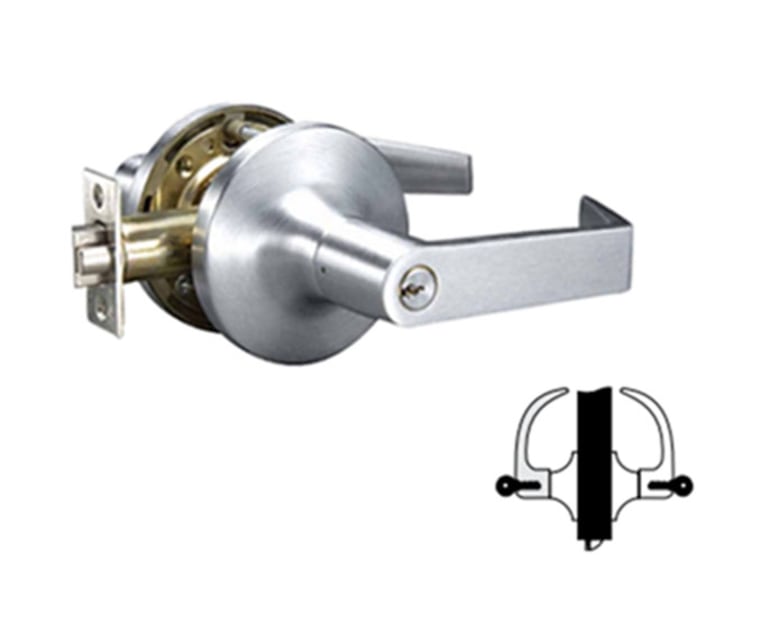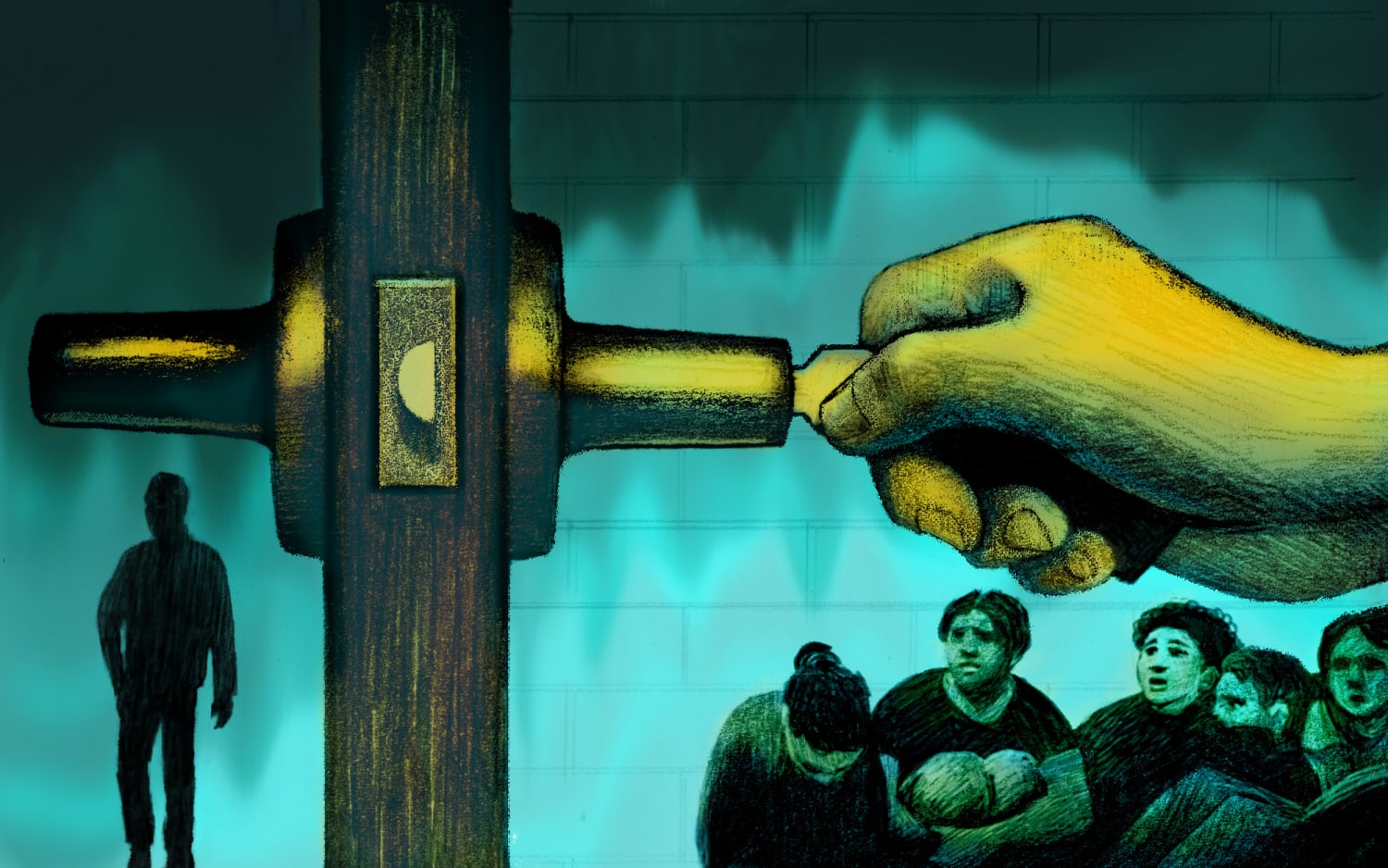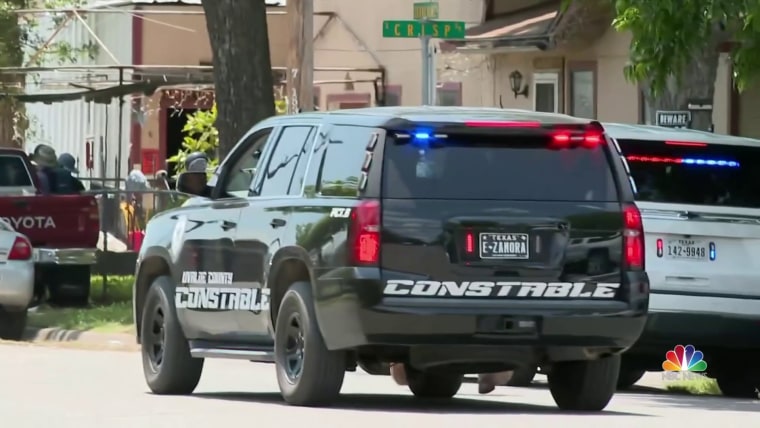Before Columbine, when security concerns in classrooms were more focused on preventing burglaries than shootings, schools were usually designed with doors that could only be locked with a key from the outside. After the massacre — in which the shooters were only able to access classrooms that were unlocked — schools across the United States began installing specialized classroom security locks, sometimes referred to as “Columbine” locks.
Such locks allow teachers to secure their classrooms with a key from either side of the door. When the door is locked, no one can enter from outside the classroom, but the door can always be opened from the inside by just turning the knob. That allows students and teachers to exit the classroom freely at all times, as fire codes require.
The upgrade doesn’t come cheap — installing a Columbine lock can cost between $200 and $900 per door, according to one industry estimate, though some older locks can be modified for less. But there is a broad consensus among experts and school safety advocates that this is a simple and effective measure that some school districts have left by the wayside even as they’ve spent millions on new security. Amid the pressure to “harden” schools, and in the absence of state or local requirements to upgrade locks, districts have bought everything from bulletproof whiteboards to artificial intelligence-powered gun detection devices, despite scant evidence that such products prevent shootings.
“Instead of giving the money to all these security companies, why not use it to change the locks on the doors?” said Randi Weingarten, president of the American Federation of Teachers, the leading labor union for educators. The group co-authored a 2020 school safety plan with Everytown for Gun Safety’s research division and the National Education Association recommending that all classrooms have interior-locking doors.

While restricting access to firearms is still their top priority, the groups said that interior locks are critical to deterring shooters who make it into a school. “That’s less invasive than virtually any other kind of security measure,” Weingarten said.
Having to step outside the classroom to lock a door during a shooting is “crazy,” she added.
Uvalde’s school district did not respond to questions about locks on its classroom doors or the Robb Elementary teacher’s account of the shooting.
The issue has surfaced again and again after school shootings: In 2007, the Virginia Tech gunman repeatedly entered classrooms that could not be locked from the inside, while students and faculty struggled to barricade the doors with their bodies and with furniture; 32 were killed.
The call for upgraded locks was revived after the 2012 shooting at the Sandy Hook Elementary School in Newtown, Connecticut, in which 20 children and six educators were killed by a gunman, and after the 2018 shooting at the Marjory Stoneman Douglas High School in Parkland, Florida, in which a gunman killed 14 students and three staff members. Neither of the schools had interior-locking classroom doors.
“There has never been an event in which an active shooter breached a locked classroom door,” a safety commission convened after the Newtown massacre pointed out in 2015, recommending the security measure.
But the logistics and expense of installing these locks can dissuade districts from investing in them, said Amy Klinger, founder and director of programs for The Educator’s School Safety Network, a nonprofit group that helps districts protect against gun attacks.
“Think about how many hundreds of thousands of schools there are in the United States and in each one, you have maybe 200 doors,” she said. “The scope of it becomes incredibly expensive and overwhelming to try to standardize.”
No state requires all schools to install interior locks, though some recommend it, and a wave of school security grants often follows shootings. But even when they have new funds available, schools have struggled to decide what to prioritize.
“School districts and administrators get overwhelmed with numbers of options and solutions,” said Cedric Calhoun, chief executive officer of DHI, an industry group for door security professionals. “A lot of times they can overlook the simplicity of a door lock.”
‘It’s inexcusable’
Like many U.S. school districts, Uvalde had dramatically ramped up its school security measures in recent years: The district hired a social media monitoring firm, brought in drug-sniffing dogs, and used a scanner to see if visitors were registered sex offenders, according to the security plan posted on its website, more than doubling its security budget.
But the only mention of door locks in the publicly posted plan was the district’s requirement that teachers keep their classroom doors closed and locked “at all times” — without describing the steps they might have to take to do so. The district did not respond to questions about the types of locks on its classroom doors or its efforts to make sure the locks worked.
The issue is now under new scrutiny in the aftermath of the shooting at Robb Elementary. Among the array of missteps and errors that allowed the Uvalde shooting to result in so many deaths — including a delayed police response that let the siege drag on for more than an hour — the school’s doors have emerged as a major security flaw. Last month, the Uvalde teacher who spoke to NBC News was among those to testify during a closed-door meeting of a special Texas House committee investigating the massacre.
Although she believes the government should make it more difficult to purchase assault-style rifles, including raising the minimum age, she wanted to make sure the lawmakers knew about a more basic concern.
“Classroom doors should not have any windows, and the doors should be able to be locked from inside and outside,” she recalled telling the committee. “I should not have to go outside and put myself in danger to verify that my door is locked.”
The concern emerged yet again in the public testimony of Texas Department of Public Safety Director Steven McCraw, who said that the shooter had walked through a classroom door that was closed but did not appear to be secured — and could not be locked from the inside.
“This is ridiculous, and it’s inexcusable if you’re looking at it from a security standpoint,” he said during last month’s hearing. He also pointed out another lock security issue that the district had not addressed: The strike plate — the metal fixture that allows the door to latch — was damaged in the first classroom that the shooter entered with the unsecured door. It was a problem at least one teacher had previously flagged to the school, but which was not fixed, McCraw said.
Source: | This article originally belongs to Nbcnews.com










